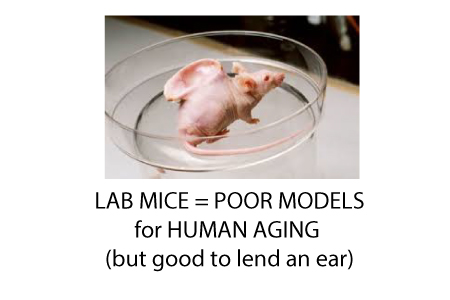
- Written:
- Author: Edward
- Posted in: aging, dr ed park, research, stem cell theory of aging
- Tags: Dr. Ed Park, dystrophin, lab mice, muscular dystropy, research, sacco, stem cell theory of aging, telomeres, terc
Mice with the same mutation that would cause muscular dystrophy (abnormal progressive failure of muscles) in humans were pretty much ok. Why? Well it turns out that lab mice are inbred mutants with exceedingly long telomeres compared to natural mice. They are the worst model to study human aging for that reason. Secondly, they don’t have efficiently scalable antioxidants leaving them at high risk for genomic damage in ways that we are not.
Research suggests turns out that mice can get the disease but that their longer telomeres often protect them and produce a mild disease form or phenotype. In a subtype of mice without a full “gene dose” or two good copies of TERC (the RNA key needed to operate telomerase), muscular dystrophy did manifest. This lends credence to the idea that stem cell failure by telomere shortening is a common pathway across species after all. It just took an accelerated rate of telomere loss to show up in the muscle stem cells.
There is only one disease with many faces. The only reason you don’t get all the cancers and all the diseases is that you run out of cures. If you drive a car to a million miles, you are going to replace all the parts.
To understand my Telomere/Stem Cell Theory of Aging and Disease, watch this 6-minute video that I made:


